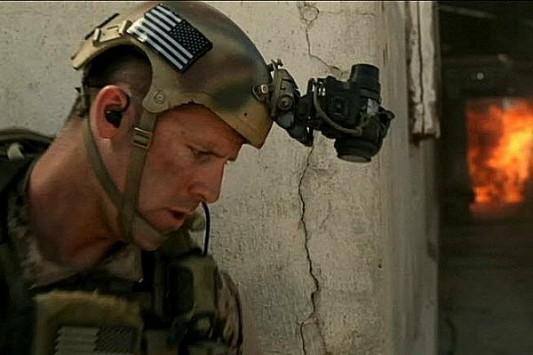Everybody wants to be the preferred vendor of end-to-end tools for digital video production. Act of Valor proves affordable cinema tools can do the job.
By Kathleen Maher
At the National Association of Broadcasters convention (NAB) this year, there was a huge amount of excitement as the industry reacts to and adapts to industry shifts. The inflection points are flying around like daggers in a circus sideshow.
Attendance was high at around 90,000 but more than sheer numbers, there were a raft of exciting—just amazing actually—announcements. The digital content creation companies are racing to provide true end-to-end tools for video production and everyone has their own ideas about where those ends really are. Digital cameras and digital work flows are here to stay. The Bandito Brothers’ Act of Valor was shown as an example of what can be done with equipment that is, if not true consumer products, readily accessible and affordable. The future of filmmaking was on display at NAB and it’s not all about high budget 3D extravaganzas, it’s also about smaller movies that mean a great deal to the small teams of people making them.

The people packing the aisles at NAB saw renewed possibilities opening up for them either to create personal movies and videos or to achieve grand visions with tools that cost less and do more. Likewise, the vendors at the shows were getting a little giddy at the potential to sell their products to a whole lot more people. Director Alfonso Cuarón told writer/film maker Debra Kaufman of Creative Cow that 2011 was the first year that the digital camera became competitive to film cameras. “It democratizes creativity,” he said. “It enables you to achieve what you are dreaming.”
Visual effects veteran Rob Legato, who most recently worked on Hugo was at Adobe’s booth demonstrating what he was able to do using Adobe tools. Showing a miraculous tracking shot from Hugo, Legato told an enthralled audience at the Adobe booth “film is on its last leg.” His work on Hugo combined huge 3D models of Paris with constructed sets and green screens seamlessly combined; it symbolized the way tools are being used together more efficiently. This year Autodesk has improved the ability of its 3D tools to work with Adobe’s Photoshop and After Effects. This is ground that was originally broken by Maxon and its Cinema 4D product.

Mercury supports OpenCL
When Adobe introduced the Mercury Playback Engine which uses GPU performance to speed up functions in Adobe tools, the company made clear its plans to expand Mercury to support available GPUs so the software could run well on any platform. However, the technology was originally developed using Nvidia’s CUDA because Nvidia was much further along in creating tools for software developers and the company was very committed to working with software partners. Well, that’s not quite accurate, AMD is committed but it has not put the same level of resources on the project. At NAB this year, AMD and Adobe were able to announce the Mercury Engine’s use of OpenCL as well as CUDA to improve performance. However, as Nvidia representatives were at pains to point out, Adobe’s work was primarily to ensure acceleration for Apple computers. Right now, only two AMD GPUs are supported by Mercury Graphics, the Radeon HD 6750M and the Radeon HD 6770M, which are in the MacBook Pro.
In the future though, AMD’s new Trinity APUs will be able to speed the Mercury Graphics Engine, in Adobe’s Photoshop CS6 and Premiere Pro CS6. As an example, AMD says Blur Gallery will run 10 times faster on Trinity with OpenCL support. The Liquefy feature is truly interactive and AMD says “dozens” of Photoshop features are accelerated thanks to OpenCL. AMD is making the point that as its Trinity line of APUs roll out, GPU computing will be accessible to people using standard computers like the MacBook Pro and not just computers with Nvidia’s Quadros and Teslas.





